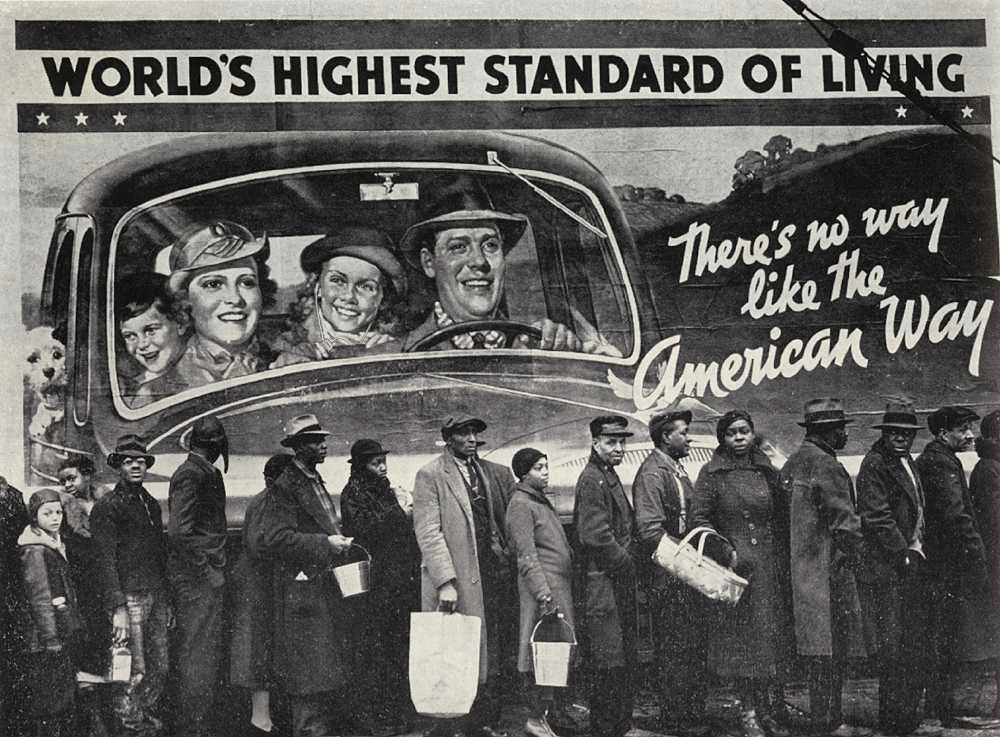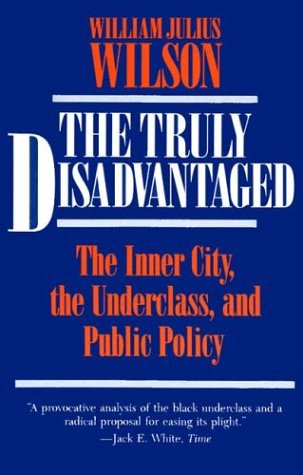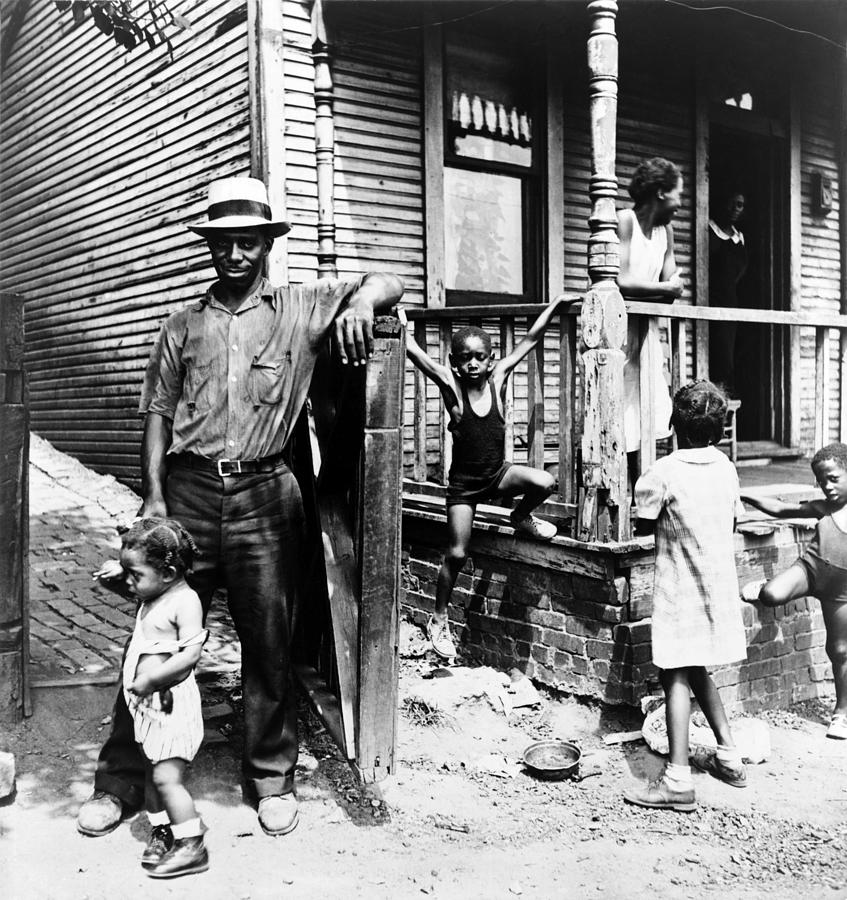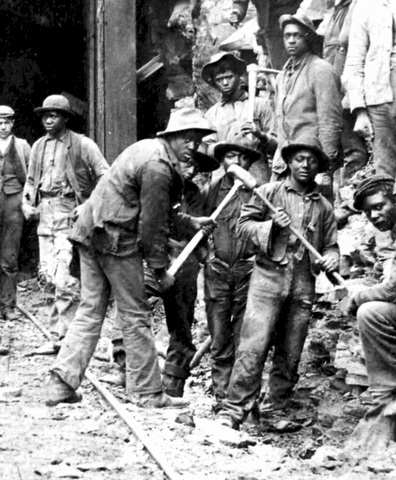
From the New York Times Book Review Desk, "Prisoners of the Economy, by Robert Greenstein, on 25 October 1987 -- ''In the period following the thirtieth anniversary of the 1954 Supreme Court decision against racial separation . . . and the twentieth anniversary of the 1964 Civil Rights Act,'' writes William Julius Wilson in ''The Truly Disadvantaged,'' ''a troubling dilemma confronts proponents of racial equality and social justice.'' A black underclass has emerged and conditions in inner city ghettos have deteriorated, despite civil rights victories and the creation of the Great Society. What went wrong? Have affirmative action and Great Society programs made things worse? Has racism intensified? Or are other factors at work?
Mr. Wilson, a University of Chicago sociologist, finds that both liberal and conservative analyses of these issues have failed to accord sufficient importance to the role played by structural changes in the United States economy and related changes in the social fabric of inner cities. He describes how liberal architects of the Great Society acted as though various education, training and community development programs would themselves shrink poverty dramatically, almost independent of economic trends. Yet in virtually every year that unemployment has risen and wages have fallen, poverty has grown worse; when the economy has picked up, poverty has lessened. Furthermore, recent research has established that when the economy turns down and unemployment increases, black men are hurt most. It should be no surprise that when unemployment rates doubled between the late 1960's and the 1980's, poverty did not diminish, confounding the hopes of Great Society planners.

LEAD: THE TRULY DISADVANTAGED The Inner City, the Underclass, and Public Policy. By William Julius Wilson.
Conservative politicians and writers in the 1980's have made this same error, Mr. Wilson argues. From Ronald Reagan to Charles Murray they note that poverty rates are as high now as in the late 1960's and thus proclaim that Great Society programs have failed. Such critics neglect to mention the doubling of unemployment rates and other critical economic changes that have disproportionately affected blacks.
IN ''The Truly Disadvantaged,'' Mr. Wilson takes on conservatives, liberals and civil rights leaders alike as he develops persuasive alternative explanations of what has gone wrong in the inner city and supports them with extensive data and research. For example, he explores the sharpening of class lines among blacks; the proportions of black men with annual incomes over $25,000 and those with annual incomes under $5,000 have both increased. Inequality of income is greater now among black families than among white families.

These factors illustrate, Mr. Wilson argues, that the existence of racism does not explain why ghetto conditions have deteriorated. Employment rates for young black men are considerably lower today than in the 1950's and fewer blacks live in two-parent families. But can racism be said to be more virulent now than then? If so, how explain the rise of the black middle class?
In this context, Mr. Wilson examines affirmative action programs, which he regards as necessary to overcome decades of past discrimination. But, he says, they help more educated, skilled and advantaged blacks, while doing little for poor blacks with limited education or training. Civil rights leaders whose agendas are dominated by anti-discrimination and affirmative action efforts are not reaching the black underclass. Their agendas should be enlarged, Mr. Wilson states.

He also punctures conservative claims that the welfare state is to blame for worsening inner city conditions. He cites the landmark study (commissioned under the Reagan Administration) by David Ellwood and Mary Jo Bane of Harvard University, which found that welfare does not significantly affect out-of-wedlock births and is not an important cause of the changes in family structure since the 1960's. Indeed, as the Ellwood study of the 1972-80 period found, the number of black children in single-parent families jumped 20 percent in that period, but the number of black children on welfare declined. Such divergent trends are strong evidence that welfare was not the motivating force behind these out-of-wedlock births. Moreover, welfare benefits fell in the 1970's, and the monetary advantages of work over welfare increased - but black unemployment rates and the number of black female-headed families grew sharply anyway. One must seek causes other than welfare for these adverse developments among lower-income blacks.
Mr. Wilson is particularly insightful in establishing a connection between the declining economic fortunes of young black men and the explosive growth in the number of black families headed by single women. The proportion of children born to black single women has grown, not because birth rates of these women have increased (in fact, they have declined in recent decades) but because many fewer black women now are married (and those who are married are having fewer children). Mr. Wilson notes the close link established by past research between employment prospects and marriage rates and presents stunning data on the extent to which the declining marriage rates among black women appear to be tied to the sagging economic fortunes and decreased employment rates of young black men.

Mr. Wilson constructs a ''black marriageable male index'' - the number of employed black men for every 100 black women in the same age group - and shows it has taken a nose dive in recent years. In 1960 there were nearly 70 employed black men aged 20 to 24 for every 100 black women that age, but by the early 1980's there were fewer than 50 such men for every 100 women. This pattern holds for other age groups as well. Both nationally and regionally, growth in the formation of black female-headed families has largely traced declines in Mr. Wilson's black marriageable male index.
The critical question then: Why did employment for young black men fall so precipitously? Mr. Wilson observes that employment rates among black teenagers fell sharply in the 1950's and 1960's, due primarily to the mechanization of Southern agriculture. In 1950, nearly half of all employed black teenagers worked as farm laborers in the South but by 1970 these jobs had vanished.

Among black men in their 20's, however, the principal employment declines occurred after 1970. Here, Mr. Wilson argues, several factors were at work. Large numbers of baby boomers and white women flooded the labor market, allowing employers to be especially choosy and forcing blacks with less education and fewer job skills to the back of the labor queue. Most important, the wrenching shifts in the economy from manufacturing to service industries and the large exodus of manufacturing jobs from Northern cities proved especially deleterious for black men.
Mr. Wilson reports that black men were overrepresented in key manufacturing industries and occupations that have declined, such as the automobile, rubber and steel industries. Building on earlier work by other researchers, he also demonstrates that since 1970 the number of jobs in large cities requiring less than a high school education has plunged, due in large part to the shrinkage of the goods-producing sector. At the same time, jobs in cities requiring more education - for which lower-income black men without high school diplomas generally cannot compete - have increased.

IN short, for decades, blacks left the rural South in record numbers to come to Northern industrial centers, a trend intensified by the disappearance of agricultural jobs in the South. But in recent years the manufacturing jobs on which they had come to rely have disappeared from Northern cities in large numbers, moving to lower-wage areas, often in the South or overseas. Meanwhile, large numbers of low-skilled jobs once found in the cities migrated to the suburbs and exurbs. As cities were transformed more into centers of financial and other professional services, many young black men who formerly would have taken low-skilled manufacturing jobs have encountered difficulty competing for new jobs that demand more schooling. While many better educated, more advantaged blacks prospered, bolstering a growing black middle class, blacks with less education and skills were left farther behind.
Intensifying this problem, black middle-class families, as well as black working-class families with stable employment histories, took advantage of better jobs and lessened housing discrimination to leave the inner cities in large numbers. Inner-city ghettos - where, in a more segregated society, the black middle, working and lower classes had lived together - have become more the domain of the black jobless, poor single-parent families and others at or near the economic bottom. Mr. Wilson shows that the concentration of poverty in some black inner city areas has increased sharply in recent years. This, he argues, has undermined community institutions formerly maintained by black middle- and working-class families, removed positive role models for young children and cut off young blacks from the informal job networks and contacts prevalent in neighborhoods where most adults are employed.

Mr. Wilson's final chapters explore the implications of his findings, concluding that full employment policies are critical to shrink the underclass and rejuvenate our inner cities. Recent economic policies - which used high unemployment as the principal weapon to produce very low inflation rates - must be altered, in his view. Tolerating seven consecutive years of unemployment rates that averaged 7 percent or more for the population as a whole (as we did from 1980 through 1986, the longest such stretch since the 1930's) leads to extremely high unemployment rates for blacks (the unemployment rate for black men averaged nearly 17 percent for the 1980-86 period) and does untold damage to the inhabitants of urban ghettos.
Mr. Wilson emphasizes the importance of training and education initiatives to upgrade the skills of young blacks and connect them with emerging jobs in a changing labor market. Greater child care assistance and more adequate levels of public assistance to poor families also figure in his prescription.
But he is critical of current welfare reform proposals which emphasize ''work'' programs that generally neither create jobs nor appreciably upgrade skills. To Mr. Wilson, such approaches fail to address the principal cause of the problem - the changes in the economy that have devastated the inner city and increased unemployment among young black men. Successful workfare programs have been found to boost employment among welfare mothers by only a modest (though not insignificant) three to eight percentage points and fail to touch young men, who generally aren't on the welfare rolls. Current welfare proposals will make little dent, he argues compellingly, unless they are part of a broader program of economic reform.

Here the underlying message of the book emerges. It is both a rejoinder to what Mr. Wilson regards as flawed conservative critiques and a call to liberals and civil rights leaders to broaden their agendas beyond what he terms the War on Poverty vision and ''race-specific'' policies such as affirmative action. Such programs and policies are needed and should continue, Mr. Wilson says, but by themselves, they will result in only limited progress for the inner city underclass.
''The Truly Disadvantaged'' far surpasses other attempts to explore these complex issues, such as Charles Murray's popular but shallow ''Losing Ground.'' Yet the reader is left with one disappointment. The book's policy prescriptions are less well developed than its powerful analysis of what has gone wrong.
MR. WILSON sets out only the broad contours of a new policy agenda, leaving it to others to mold specific initiatives. He calls for economic policies and social programs that would be available to the general population, not just to the poor and minorities, in order to build and sustain a broader base of political support. He places greatest emphasis on a general economic policy that would involve long-term planning to generate economic growth (in poor as well as more prosperous areas) and a tight labor market (so that employment opportunities would be more widely available). This economic policy should be combined, he says, with fiscal and monetary policies to keep inflation under control and enable us to move away from policies of controlling inflation by allowing unemployment to rise.

Mr. Wilson recommends a ''national labor market strategy'' to make the labor force more adaptable to shifts in the economy through such meas-ures as training and retraining programs closely tied to changes in requirements for private-sector jobs. In addition, he would move social welfare programs in the direction of European-style ''family allowances'' (which benefit poor as well as nonpoor families with children) and increase child-support collections from absent fathers and supplement these payments when they are low. He also calls for increased investment in child care. As this brief summary suggests, this is a highly ambitious agenda. It is difficult to see ways to secure its approval in the current political climate.
Nevertheless, ''The Truly Disadvantaged'' should spur critical rethinking in many quarters about the causes and potential remedies for inner city poverty. As policy makers grapple with the problems of an enlarged underclass, they - as well as community leaders and concerned Americans of all races - would be advised to examine Mr. Wilson's incisive analysis. HIS HEROES ARE SOCIAL DEMOCRATS
William Julius Wilson says he hopes his new book on the plight of America's inner city underclass will dispel ''the erroneous perception among some people that I am a black conservative.''
Mr. Wilson said that perception was based on the title of his last book, ''The Declining Significance of Race,'' published in 1978. The theme of that book was that ''class has become more important than race in determining the life chances of black people,'' he said.

The title of his new book, ''The Truly Disadvantaged,'' was chosen to suggest that poor people in big cities ''suffer from both race and class subordination,'' he said in a telephone interview from his home in the Hyde Park neighborhood near the University of Chicago, where he is a professor of sociology and public policy.
Mr. Wilson, now 51 years old, was born in Blairsville, Pa., about 40 miles east of Pittsburgh, and grew up in rural poverty. His father worked in steel mills and coal mines, but died when William was 12. His mother supported the family of six children by working as a maid. The family was on the welfare rolls for a time. Because of this experience, he said, ''I think I am in a better position to empathize with the poor than are many middle-class people who write about blacks in poverty.''
After attending Wilberforce University in Ohio on a church scholarship, Mr. Wilson got a doctorate in sociology from Washington State University in Pullman, Wash. ''In the late 1960's,'' he said, ''I was caught up in the civil rights movement. I was interested in the way people were describing the problems of race. But I soon recognized that a good deal of the scholarship was polemical and rhetorical, lacking sound theoretical foundations.''

Mr. Wilson said he had experienced racial discrimination in Pennsylvania and in the South, while he was in the army. But, he added, ''I cannot recall a single personal experience that I would describe as a major incident of overt discrimination since I entered graduate school.''
He says that affirmative action programs have been helpful to members of minority groups, but that it is even more important to have social, economic, employment and training programs that benefit poor people of all races. Mr. Wilson said he identifies with the liberal wing of the Democratic Party and feels kinship with ''social democrats'' like Michael Harrington, whom he described as ''one of my heroes.''[Copyright 1997 The New York Times Company]
More Than Just Race: Being Black and Poor In the Inner City from Greater New Orleans Foundation on Vimeo.

If you'd like an alternative to randomly dating girls and trying to figure out the right thing to say...
ReplyDeleteIf you would prefer to have women chase YOU, instead of spending your nights prowling around in crowded bars and night clubs...
Then I urge you to watch this eye-opening video to discover a weird little secret that has the power to get you your very own harem of beautiful women just 24 hours from now:
FACEBOOK SEDUCTION SYSTEM!!!